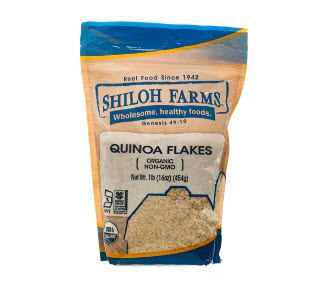Traditional pet food brands often include low-quality ingredients that are filled with hormones, preservatives and pesticides. While these products may be more affordable, they may not provide the necessary nourishment for pets. This poses a dilemma for conscientious pet owners who prefer to feed their pets whole foods instead of fillers. To address this issue, pet owners can turn to home-cooked diets which allow for complete control over ingredients and ensure optimal nourishment.
Benefits of a Home-Cooked Diet for Your Dog
By preparing meals at home, pet owners have complete control over what goes into their pet’s food, eliminating the risk of questionable additives and poor-quality ingredients. Additionally, home-cooked diets can be tailored to meet specific dietary needs, allowing pet owners to adjust protein, carbohydrate, fats and vegetable ratios as necessary. While fresh, human-grade food may seem more expensive at first, it can be a more cost-effective option in the long run, considering potential health benefits and reduced veterinary bills. So, if you want to know exactly what you’re feeding your dog and cater to their specific needs, a home-cooked diet might be the way to go.
Types of Diets for Your Dog
- All protein: 70-80% protein and 20-30% fat
- High protein/fat and lower carb: 40-50% protein, 25-30% fat and 20-30% carb
- Mid-range protein and higher carb: 25-30% protein, 25-30% fat and 45-50% carb
- High carb: 15-18% protein, 10-15% fat and 70% carb.
Choosing the right diet depends on your budget and your dog’s needs. Diets that are higher in protein are more costly than diets higher in carbs. Large dogs, active dogs and puppies will need a higher caloric intake which can lead to a higher overall cost for feeding.
It is important to consult your vet before changing your dog’s diet as needs vary depending on the size, age, breed and activity level of your dog. The home-cooked diet allows dog owners to adjust ingredients and ratios to suit their dog’s needs. Regular blood tests, at least once a year, can help monitor your dog’s nutritional needs. Recipe builders can help you create nutritionally complete, balanced meals that are within your budget. For dogs prone to dehydration, adding high-moisture ingredients can help maintain their hydration levels. It’s also a good idea to mix up the ingredients occasionally to provide a range of nutrients.
What to Feed Your Dog
- Protein: Chicken, beef, lamb, venison, bison and eggs
- Carbs: Rice, millet, oats, quinoa and cooked potatoes
- Fats: Fish oil, coconut oil and flax seeds
- Vegetables: Squash, sweet potatoes, green beans, peas and broccoli
- Fruit: Apples, pumpkin, blueberries, watermelon, cranberries and bananas
- Extras: Bone broth, kefir, Greek yogurt, chia and hemp seeds and freeze-dried raw meal toppers
Ingredients to Avoid With Homemade Dog Food
Before making a meal for your dog, it is a good idea to reference the full list of foods that are toxic or unhealthy for dogs. Some of the ingredients that should never be fed to dogs include chocolate, grapes, raisins, onion, garlic, macadamia nuts, almonds, sugar, salt, chives, leeks, mushrooms, xylitol and raw yeast dough.
What You’ll Need to Make Homemade Dog Food
Deciding to create a home-cooked diet for your dog is a significant undertaking that requires immense planning and labor. Home-cooked diets require a lot of time spent buying ingredients, cooking and portioning out meals.
- Digital scale – to portion out meals according to your dog’s caloric requirements
- Containers – to store each meal either in the fridge or freezer
- Supplements – to fill any nutritional gaps in the diet
How to Make Dog Food
The easiest way to prepare dog food is to cook each ingredient in advance. You can make a batch of food at the beginning of the week and portion it out throughout the week. Meals can be portioned in advance or at the time of feeding. If meals are made in advance, it is a good idea to leave out any oils or supplements as refrigeration can change their composition. Stick to the protein, carbs, fruits and veggies for pre-portioning, then add the supplements and oils at feeding time.
- Choose a Protein Base: Choose human-grade, responsibly sourced meat, ideally with less than 20% fat. If you cook the meat with bones be sure to remove them before feeding as cooked bones can easily splinter and harm your dog if ingested.
- Make your carbohydrates: Cook your carb source in either water or low-sodium bone broth. Some breeds require gluten-free diets so it is important not to include bread or pasta as a carb source.
- Slice fruits and Vegetables: Chop fruits and vegetables into bite-size pieces. These can be cooked or served raw, except potatoes which must be cooked due to a compound called solanine which is toxic to dogs.
Building a Bowl for Your Pup
Portion out each ingredient
Weigh out protein, carbs, fruits, and vegetables in the specific weight determined by your dog’s caloric requirements. Then mix in any supplement powders, probiotics and oils.
Add to bowl or slow feeder
Slow feeders can help dogs who scarf down their food too quickly, by forcing them to exert more effort to get their food. This is beneficial to deep-chested dogs prone to bloat. It also serves as mental enrichment for your dog.
Top with fats and extra meal toppers
Once the food is in the bowl, you can add any extra ingredients such as freeze-dried raw meal toppers, bone broth, kefir, Greek yogurt, xylitol-free peanut butter, chia or hemp seeds. You can also add any oils on top if you haven’t already mixed them into the base.
A homemade diet for dogs offers several benefits that can greatly improve their overall health and well-being. By preparing meals at home, you have complete control over the ingredients, ensuring that your furry friend receives the best nutrition possible. Additionally, you can tailor the diet to meet specific dietary needs, such as allergies or sensitivities. This level of customization can lead to improved digestion, increased energy levels and even a shinier coat.
Not only does a homemade diet provide health benefits, but it can also save you money in the long run. By investing time and effort into creating nutritious meals, you may reduce the chances of your dog developing health issues that could lead to costly veterinary bills.
Remember, it’s important to consult with a veterinarian before making any significant changes to your dog’s diet. They can provide guidance and ensure that your dog’s nutritional needs are being met. With their input, you can create a meal plan that suits your dog’s specific requirements.




